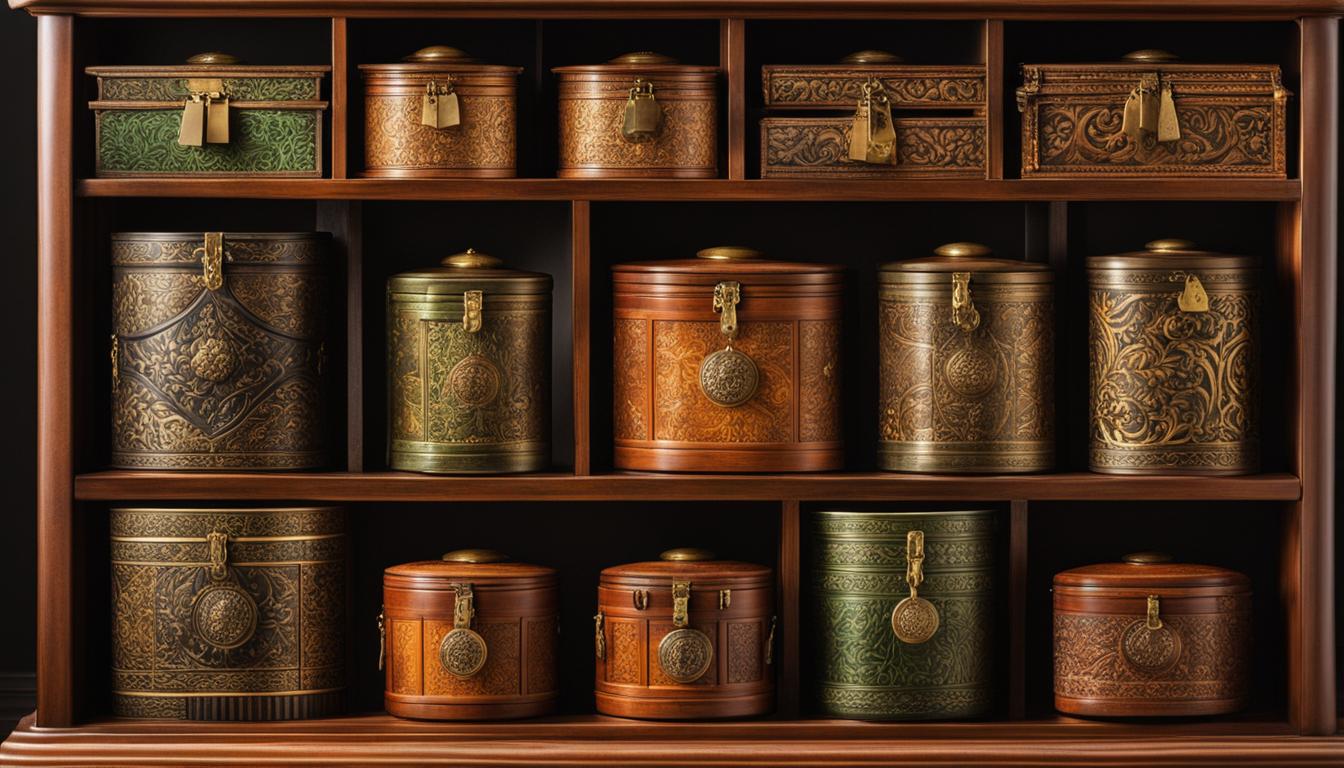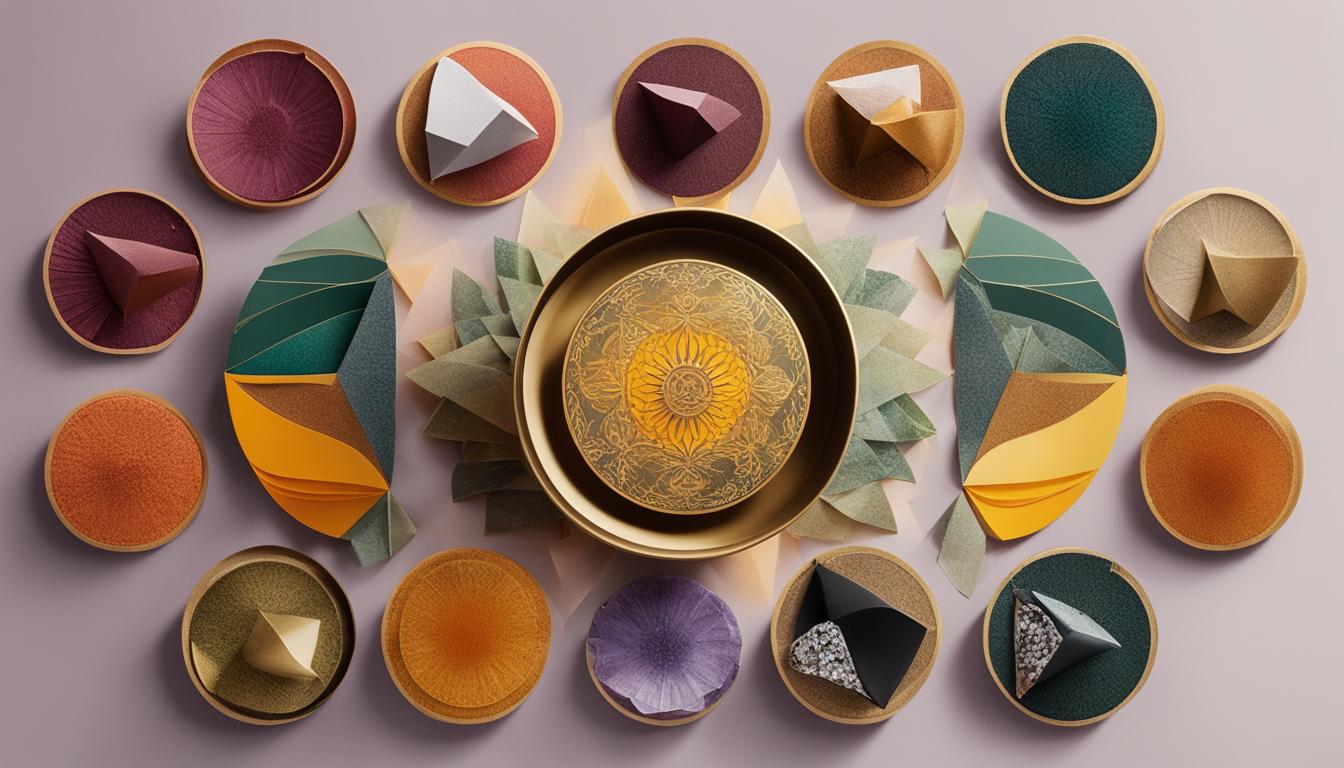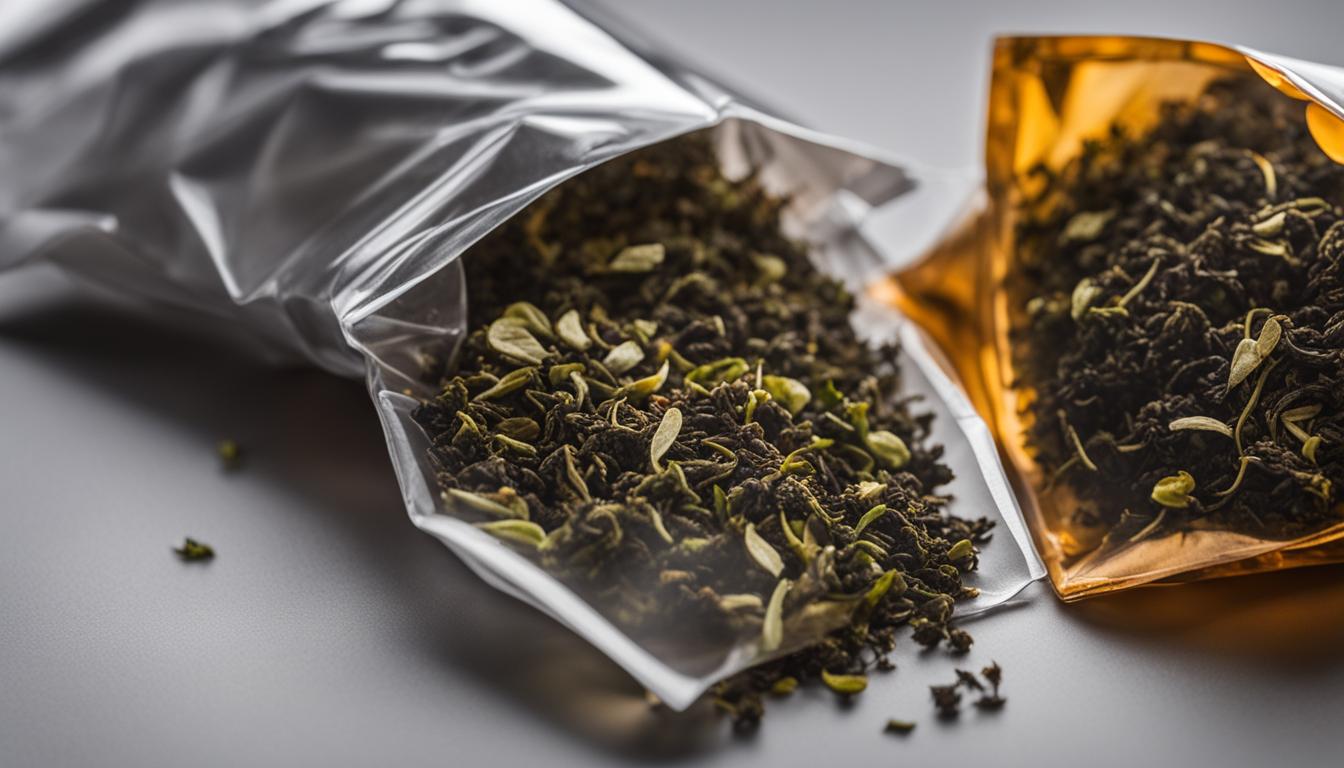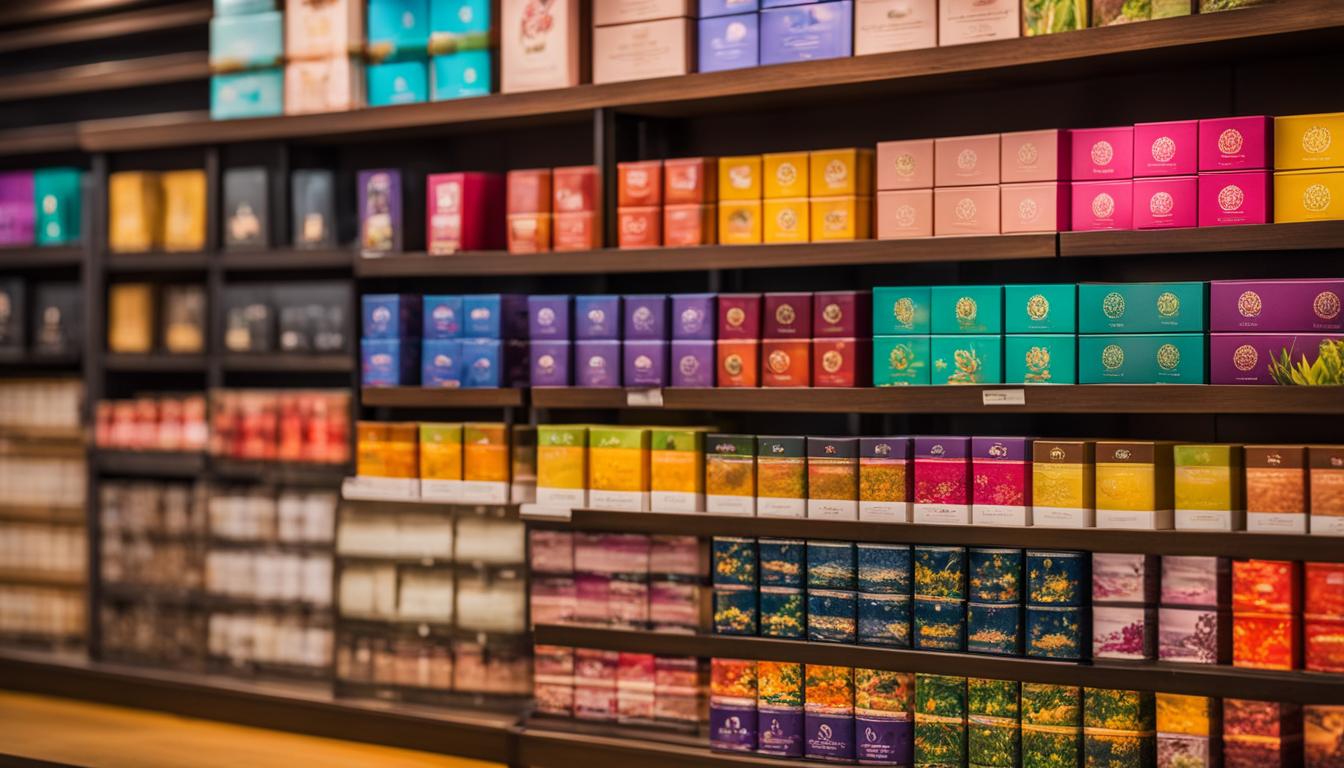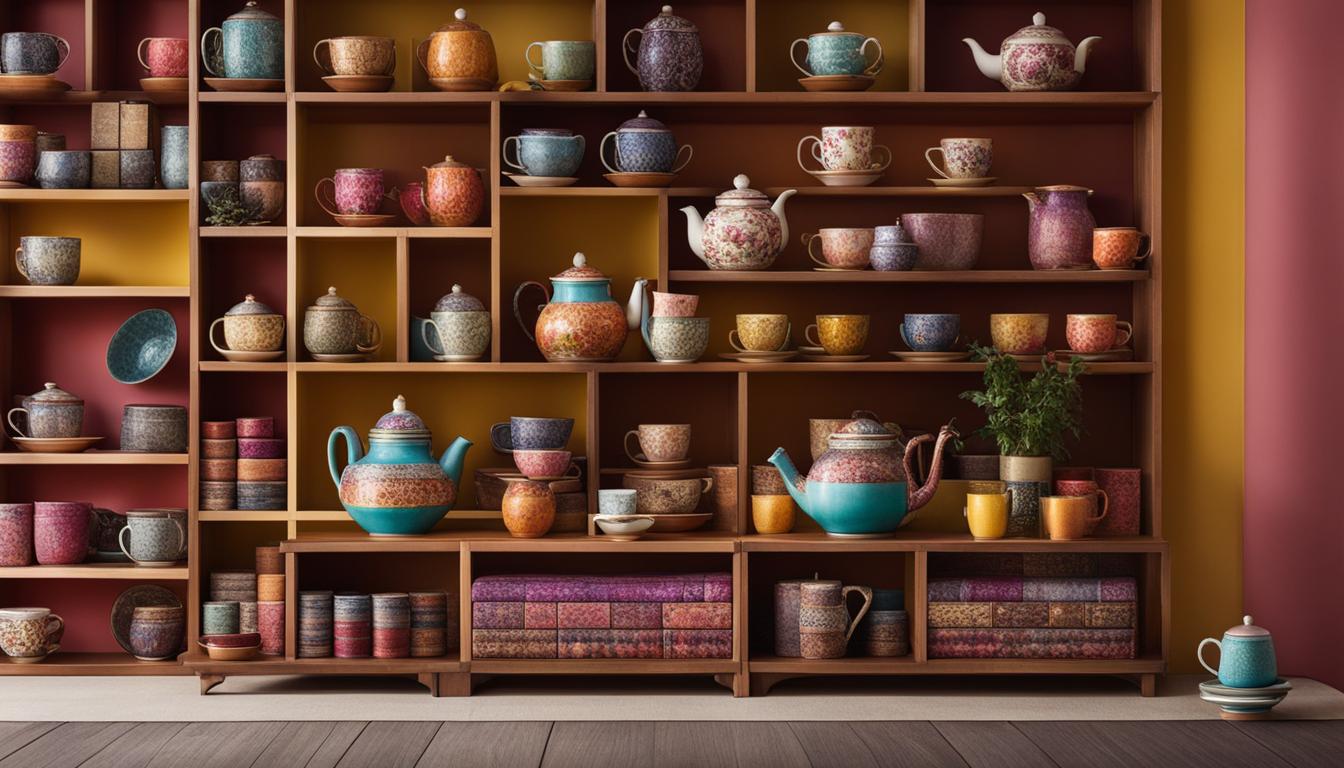Welcome to our guide on how to master the art of tea storage. Proper tea storage is essential for preserving the quality, flavor, and freshness of your favorite brews. Whether you enjoy loose-leaf tea or bagged tea, understanding the best practices for tea storage is key to ensuring every cup is a delightful experience.
Key Takeaways:
- Storing tea in a cool, consistent environment helps maintain its quality.
- Airtight containers are essential to prevent moisture and air exposure.
- Different types of tea have specific storage requirements – know how to store each type properly.
- Temperature, humidity, light, and air exposure are critical factors to consider when storing tea.
- Using tea storage organizers can help keep your tea collection organized and easily accessible.
Factors Affecting Tea Storage
When it comes to storing tea, several factors can significantly impact its quality, flavor, and aroma. By understanding and addressing these factors, you can ensure optimal tea storage conditions and preserve the freshness of your favorite brews.
Temperature
Temperature plays a vital role in tea storage. It’s important to store tea in a cool and consistent environment to prevent flavor loss and maintain its delicate aromas. High temperatures can accelerate flavor deterioration, while low temperatures can lead to moisture damage. Keeping your tea in a temperature-controlled space away from heat sources is key to preserving its quality.
Humidity
Humidity levels also impact tea storage. Excessive moisture can result in mold growth and spoilage, so it’s crucial to maintain a humidity range of 60-70%. To prevent tea leaves from absorbing excess moisture, store them in airtight containers made of materials like glass or ceramic. This will help preserve the integrity of the tea and prevent any unwanted changes in flavor.
Light and Air Exposure
Light and air exposure can cause tea to degrade and lose its flavor. To shield your tea from these elements, store it in opaque containers that block out light. This will help preserve the tea’s natural color and prevent the decomposition of chlorophyll. Additionally, using airtight containers will prevent the tea from coming into contact with air, which can lead to oxidation and loss of flavor.
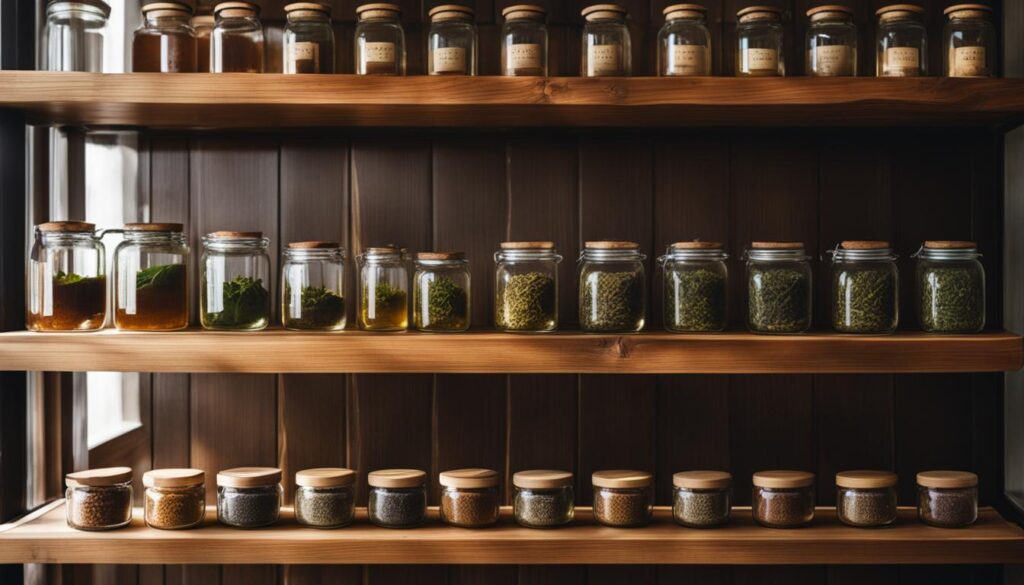
| Factor | Impact | Storage Tips |
|---|---|---|
| Temperature | High temperatures accelerate flavor loss, while low temperatures can lead to moisture damage. | Store tea in a cool and consistent environment away from heat sources. |
| Humidity | Excessive moisture can cause mold growth and spoilage. | Maintain humidity levels of 60-70% and store tea in airtight containers. |
| Light and Air Exposure | Light and air can degrade tea and cause flavor loss. | Store tea in opaque containers and use airtight containers to prevent oxidation. |
Tea Storage Tips by Tea Type
Properly storing different types of tea is essential to maintain their flavors, aromas, and shelf life. Each type of tea has specific storage requirements to ensure optimal freshness. Here are some tea storage tips organized by tea type:
Green Tea
Green tea is delicate and can easily lose its flavor and freshness if not stored properly. To keep your green tea at its best, store it in airtight containers made of glass or ceramic. These containers will protect the tea from heat, moisture, and direct sunlight. Green tea should also be stored away from strong odors as it can easily absorb them. By following these storage practices, you can extend the shelf life of your green tea and enjoy its delicate flavors for longer.
Black Tea
Black tea is more robust and can withstand slightly different storage conditions. Like green tea, black tea should be stored in airtight containers to protect it from moisture and air exposure. However, black tea can be stored in slightly warmer temperatures than green tea. A cool, dry place away from direct sunlight is ideal for storing black tea. By following these storage tips, you can ensure that your black tea remains flavorful and enjoyable for an extended period.
Oolong Tea, White Tea, and Herbal Tea
Oolong tea, white tea, and herbal tea have similar storage requirements. These teas should also be stored in airtight containers away from strong odors, moisture, and air exposure. It is important to keep these teas separate from other teas to prevent flavor transfer. By following these tea storage practices, you can prolong the freshness and quality of your oolong tea, white tea, and herbal tea.
Tea Pantry Storage Ideas
To keep your tea collection organized and easily accessible, consider using tea storage organizers. Stackable tins, wooden chests, and glass canisters are popular options for tea storage. These organizers not only keep your tea neatly arranged but also help protect it from light and air exposure. Labeling each container with the tea type and date of purchase can also help you keep track of freshness. Get creative with your tea pantry storage and find a solution that suits your personal style and tea collection.
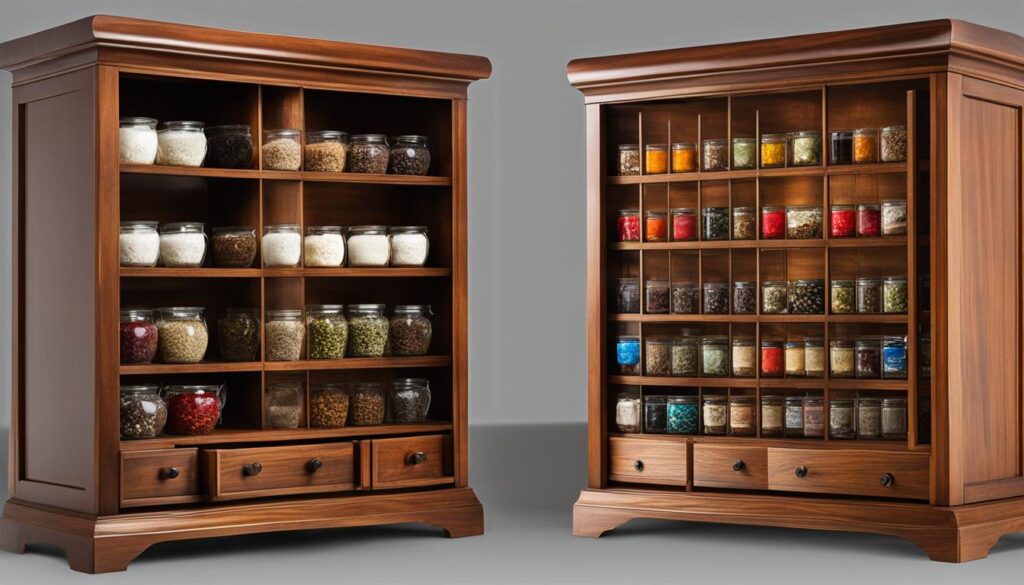
By storing your tea properly and following these tea storage tips, you can ensure that your tea remains fresh, flavorful, and enjoyable for a longer period. Whether you’re a green tea enthusiast or prefer black, oolong, white, or herbal tea, proper storage practices will help you savor every cup like a true tea connoisseur.
Conclusion
To ensure the freshness, flavors, and aromas of your tea remain intact, proper tea storage is essential. We’ve covered various factors that can affect the quality of stored tea, such as temperature, humidity, light, and air exposure. By following the best practices revealed in this article, you can enjoy a delightful cup of tea every time.
Remember, storing your tea in a cool and consistent environment is crucial. Keep it away from heat sources and direct sunlight. Seal it in airtight containers to prevent moisture and air exposure, which can lead to flavor loss and spoilage.
Each type of tea has its own specific storage requirements, so it’s important to understand them. Whether you’re storing green tea, black tea, oolong tea, white tea, or herbal tea, take the necessary steps to keep it fresh and flavorful. And don’t forget to label your containers with the tea type and date of purchase to keep track of freshness.
So, whether you’re a tea enthusiast or just someone who enjoys a soothing cup now and then, remember that proper tea storage is the key to preserving its quality. With the right knowledge and techniques, you can savor every sip like a true connoisseur. Cheers to the art of tea storage!
FAQ
How should I store my tea?
Tea should be stored in a cool and consistent environment, away from heat and direct sunlight. It is best to use airtight containers to prevent moisture and air exposure.
What are the factors that can affect tea storage?
The factors that can affect tea storage are temperature, humidity, light, and air exposure. It is important to control these factors to maintain the quality of your tea.
How can I prevent moisture damage to my tea?
To prevent moisture damage, make sure to store your tea in a cool and dry place. Use airtight containers to keep out excess moisture.
Can I store different types of tea together?
It is recommended to store different types of tea separately, as each type has specific storage requirements. Storing them together can lead to flavor cross-contamination.
How long can I store tea?
The shelf life of tea varies depending on the type. Generally, green tea can be stored for 6-12 months, black tea for 2-3 years, oolong tea for 1-2 years, white tea for 1-2 years, and herbal tea for 1-2 years.

